Our friends on the Faroe Islands share much with their Nordic cousins but have developed a unique culture. Learn more about the Faroe Islands with these fun facts.
Tucked away in the North Atlantic between Scotland and Iceland, the Faroe Islands often slip under the radar for many travellers. Yet this remote archipelago, made up of 18 main islands and hundreds of smaller islets and skerries, offers one of the most distinctive landscapes in Europe.
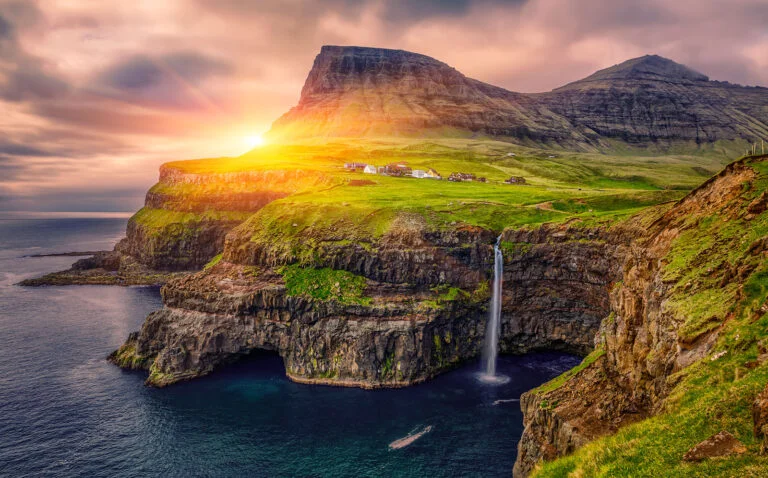
Towering sea cliffs, deep fjords, and windswept grasslands define the terrain, while puffins and sheep outnumber people by some margin. But the Faroe Islands are more than just dramatic scenery and wildlife.
The islands have their own language, parliament, airline, and football team, along with a strong cultural identity shaped by centuries of isolation and resilience.
From surprising infrastructure to local traditions and global movie moments, here are some fascinating facts that reveal what makes the Faroe Islands such an intriguing part of the Nordic region.
1. There are 18 main islands
Defining an archipelago can often be complex. The Faroe Islands comprise over 750 islands, islets, and skerries, yet it is the 18 main islands that truly encapsulate the spirit of the nation. Of these, only one remains uninhabited.
Streymoy, not only the largest island, is also the most populated and hosts the capital, Tórshavn.
Following closely in size and population is Eysturoy, where more than 10,000 residents enjoy a vibrant mix of modernity and tradition, set against a backdrop of stunning natural beauty.
These islands form a tight-knit community that maintains a strong sense of identity and autonomy, making them an intriguing subject for anyone interested in the cultural and social dynamics of isolated regions.
2. The islands are an autonomous territory of Denmark
Or more specifically, the islands form a self-governing overseas administrative division of the Kingdom of Denmark, in much the same way as Greenland.
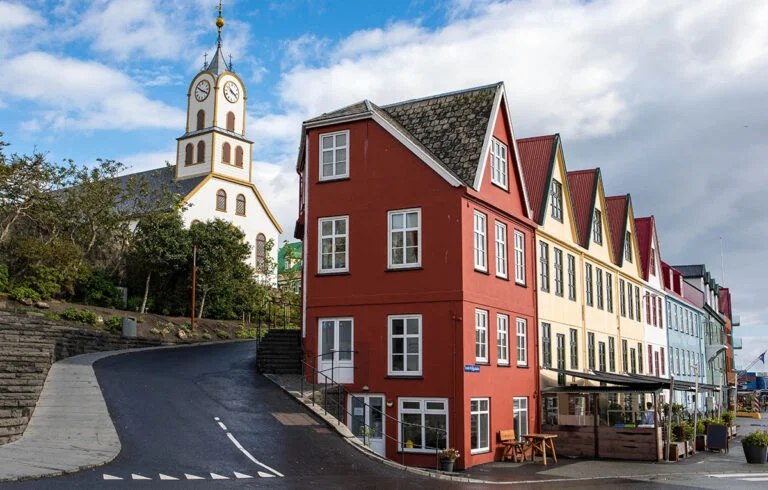
For hundreds of years the Faroe Islands were part of Norway, until the 1814 Treaty of Kiel transferred them to Denmark.
Self-governing since 1948, the islands have their own parliament and control most areas of lawmaking aside from defense, policing and foreign affairs.
While Danish is also taught in schools, Faroese is the national language and bears closer resemblance to Icelandic and Old Norse than Danish does. The Danish krona is the official currency although local banknotes are issued.
3. There are more sheep than people
There are approximately 70,000 sheep living on the islands. The last official human population estimate of the Faroe Islands was just 53,358. That's roughly half the population of Inglewood, California.
Believed to have been introduced around the 9th century, Faroese sheep are a unique breed of hardy sheep that roam year-round in the meadows and mountains of the islands.
Some Scottish sheep (and now cross-breeds) also live on the islands, having been introduced in the 19th century. Researchers have found sheep DNA in lake-bed sediments dating back more than 1,500 years.
4. You’re never far from the sea
In the Faroe Islands, the sea is a constant presence that shapes daily life and culture. All major towns and villages, hosting populations ranging from a few hundred to several thousand, are situated along the coast.
Remarkably, no point on any of the islands is more than three miles from the ocean. This proximity means that the sounds of waves and the scent of salt air are ever-present, blending seamlessly into the fabric of Faroese life.
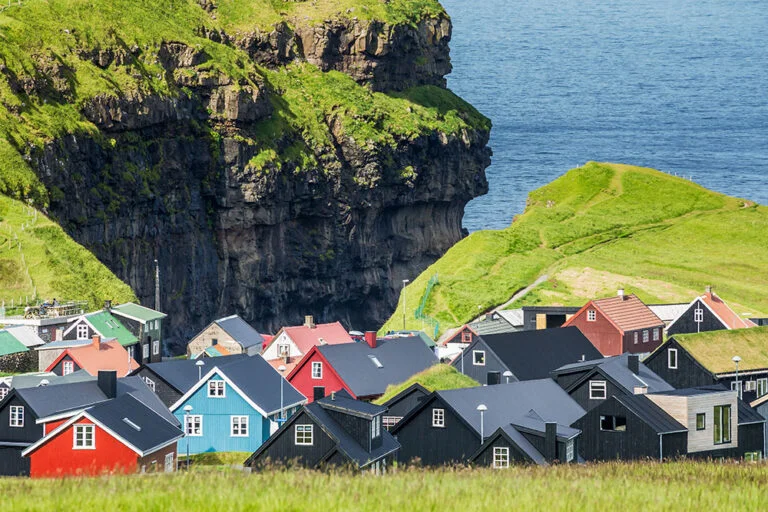
The sea not only provides a livelihood for many through fishing and aquaculture but also plays a central role in local recreation and tourism, offering numerous opportunities for sailing, fishing, and oceanic exploration.
5. Scenes from James Bond were filmed here
In a recent article about movie locations in Norway we mentioned several places used in the most recent James Bond movie, No Time to Die. Our friends from the Faroe Islands also featured, in spectacular fashion.
Spoiler alert! Kalsoy island was the setting for Safin’s island in the third act of the movie. The visually striking coastline became the location for one of the most memorable ever moments in any James Bond movie.
The climax of No Time to Die is notable as it marks the first instance in the James Bond series where the character does not return home. This scene, set against the stunning natural backdrop of Kalsoy in the Faroe Islands, holds special significance for the locals.
In tribute, villagers have erected a tombstone for the iconic spy, mirroring the design of Bond’s parents’ tombstone from Skyfall.
The stone is engraved with the poignant quote read by M at the film’s close, “The proper function of man is to live, not to exist,” which is originally by Jack London and was referenced by Ian Fleming in You Only Live Twice.
6. The Faroe Islands said no to tourists
In 2019, the Faroe Islands made headlines around the world for a bold tourism initiative. Rather than promoting the islands as a travel destination, the national tourist board declared them “closed for maintenance.”
Popular hiking trails and natural sites were temporarily shut to regular tourists. But the islands didn’t go completely quiet. Instead, a small group of volunteers were invited to take part in conservation projects.
Locals and international participants helped repair footpaths, build waymarkers, and carry out essential maintenance to protect the fragile environment from the impact of growing tourism.
The campaign was well received and sparked global interest. It highlighted the islands’ commitment to sustainable travel and struck a chord with people looking for more meaningful ways to explore the world.
While the Faroe Islands now welcome visitors year-round, the “Closed for Maintenance” message remains a memorable example of how small destinations can take control of their growth on their own terms.
7. Ferries are a critical part of public transport
In a country made up of 18 islands, it’s no surprise that ferries play a vital role in everyday travel. While a growing network of tunnels now connects many of the larger islands, several smaller communities still rely entirely on regular ferry services.
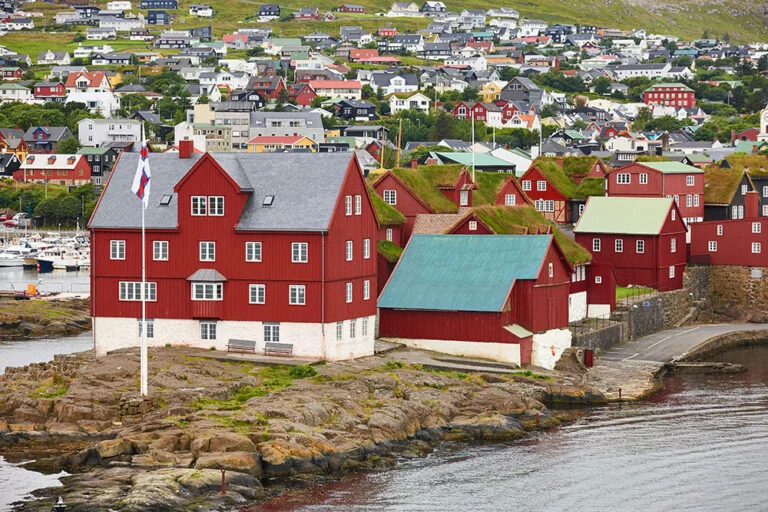
Operated by the national transport authority, Strandfaraskip Landsins, these ferries are heavily subsidised and used by both locals and visitors. Some routes are car ferries, while others are for passengers only. Travel times range from just a few minutes to over an hour, depending on the route.
Ferries are especially important for islanders commuting to work, attending school, or accessing essential services. For tourists, they offer an affordable and scenic way to explore harder-to-reach places like Kalsoy, Sandoy, and Svínoy.
8. There are only a handful of traffic lights
Are you sick of red lights in rush-hour traffic? A Faroe Islands road trip could be the answer. Just nine sets of traffic lights exist on the islands, eight of which are in and around the compact capital, Torshavn.
Many of these are new, explains Høgni Reistrup from Guide to Faroe Islands: “Since the new Glasir collage designed by the renowned architect Bjarke Ingels opened in 2018, the municipality has doubled the number of traffic lights on the roads that lead to the new college.”
However, that doesn't mean that driving is always easy. Many roads outside Torshavn are extremely narrow, so you'll need to be constantly on the lookout for oncoming traffic and passing points.
Another fun fact for drivers: The Faroe Islands is home to the world's first underwater traffic circle.
9. The Faroe Islands has a national airline
It’s a common myth that the only way to get to the islands is from Denmark. While Atlantic Airways’ daily direct flights from Copenhagen are the most common route, flights are also available from several other European destinations.
At the present time, Atlantic Airways is the only airline serving the islands year-round, with the exception of one route from Bergen, Norway, operated by Widerøe.
Scandinavian Airlines (SAS) also flew a regular route from Copenhagen prior to the pandemic, but at present the route is not operational during the winter.
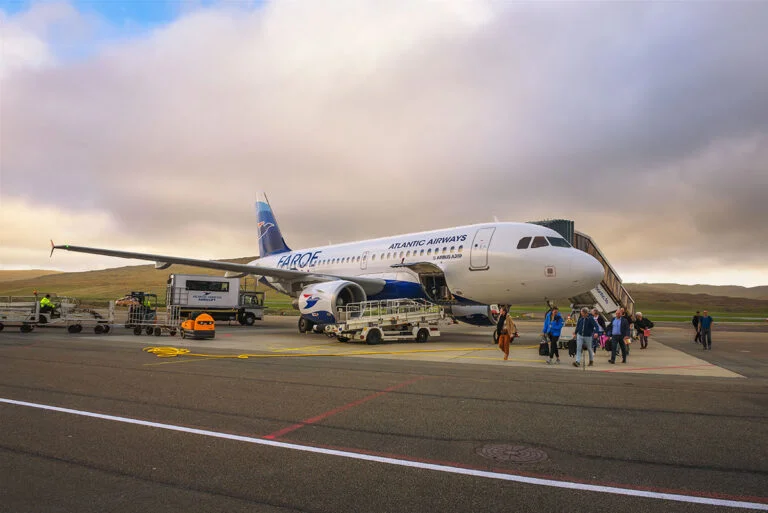
The Faroe Islands can also be reached on the Smyril Line ferry that runs a year-round service between Iceland and Denmark. However, the crossing to the Faroe Islands takes 30 or 38 hours from Hirtshals, Denmark, depending on the season.
10. Whaling continues despite international criticism
Despite the wonderful landscapes and relaxed way of life, the Faroe Islands is perhaps best known internationally for its whaling operations.
The Faroe Islands government states that “it is considered both economic and environmental good sense to make the most of natural resources which are locally available.”
Dating back to the 9th century, the practice is now heavily regulated by the government and done under police supervision.
Despite such changes, photographs of the annual capture of hundreds of whales and dolphins causes global outrage.
Times may be changing, however. The most recent hunt in September 2021 led to an unexpectedly large catch, an event that even shocked some participants.
11. The Faroese language was once banned
For centuries under Danish rule, Faroese was considered a dialect and not a written language. Danish was used in schools, churches, and official documents. It wasn’t until the late 19th century that efforts began to codify and promote Faroese as a distinct language.
The first Faroese Bible wasn’t published until 1961, and the language only became fully recognised in education and government in the 20th century. Today, Faroese is not only widely spoken but is a key part of national identity.
12. There's an impressive network of tunnels
Given the geography, it’s no surprise that tunnels are essential in the Faroe Islands, but the scale is impressive.
It's hard to believe what lies beneath when you gaze at the beautiful land above. Yet there are more than 20 undersea and mountain tunnels connecting many of the islands and remote communities.
The most famous is the Eysturoyartunnilin, an 11-kilometre subsea tunnel that opened in 2020 and features the world’s first underwater roundabout. The tunnel has cut travel times dramatically and shows the islands' commitment to infrastructure despite their small size.
13. Knitting plays a vital role in Faroese life
In the Faroe Islands, knitting has long been more than a hobby. It has shaped daily life, culture, and identity across generations.

With more sheep than people, wool is one of the islands’ most valuable natural resources, and it has been used for centuries to produce warm, functional clothing suited to the North Atlantic climate.
Traditional Faroese wool jumpers are made from the coarse, weather-resistant wool of native sheep. These garments often feature distinctive geometric patterns and motifs that are tied to specific regions, families, or local stories. In some cases, the design itself reveals where the jumper was made.
Wool is used not only for clothing, but also for blankets, felted accessories, and even home insulation. Locally made knitwear is a common sight at markets and craft stalls, and many Faroese wear traditional pieces for national celebrations or special occasions.
Knitting traditions are now enjoying renewed interest both within the Faroe Islands and internationally. As Nordic knitwear gains popularity in the global fashion world, Faroese wool and craftsmanship are finding new audiences.
Some designers are combining traditional techniques with modern patterns and materials, helping to preserve the heritage while appealing to contemporary tastes.
14. There’s no prison on the islands
Technically, there is a small facility on Mjørkadalur, a former NATO radar station on Streymoy, but it has very limited capacity. For longer sentences, Faroese inmates are sent to Denmark to serve their time.
This arrangement reflects both the low crime rate and the tight-knit nature of Faroese society. Serious crime is rare, and the local approach to justice leans heavily on community values and rehabilitation.
15. The football team is better than you'd expect
Despite a population of just over 50,000, the Faroe Islands has its own national football team and is a full member of both FIFA and UEFA.
While they rarely win against the bigger nations, they’ve pulled off some famous upsets in recent years. The most famous include a 1–0 win against Greece in 2014 and a 2–1 victory in the return match.
The domestic league is small but lively, with matches often played in dramatic coastal stadiums. With international attention because of this scenic quality, football is a source of great local pride.
Have you ever been to the Faroe Islands? What's your favourite fact about this remote archipelago? Let us know down in the comments.


The Faroes are absolutely beautiful and we visited in February with the soaring mountains dusted with snow.. The underwater roundabout is decorated with beautiful lighting and the number of tunnels is amazing. It must have cost a fortune to build and hardly seems worth it with the tiny populations on each island and no one seems to know who paid for it all. The local food though is definitely an acquired taste – as one (highly educated) local young girl said to us with a laugh,..’Our food is disgusting’:)